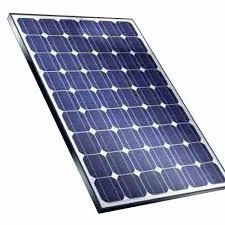Optimal Dimensions of Solar Panels for Rooftop Installation
The dimensions of solar panels on rooftops are crucial factors that influence their efficiency, aesthetics, and overall effectiveness in harnessing solar energy. As the demand for renewable energy sources grows, understanding the sizing and placement of solar panels becomes increasingly important for homeowners and businesses alike.
Typically, residential solar panels measure about 65 inches by 39 inches, equating to approximately 17.5 square feet per panel. However, panel sizes can vary based on their technology and manufacturer. For instance, some larger panels can measure up to 77 inches by 39 inches, providing a slightly more substantial surface area to capture sunlight. The choice of panel size often depends on the specific energy needs of the property, the available roof space, and budgetary considerations.
When it comes to installation, the dimensions of solar panels play a critical role in determining how many panels can fit on a roof. Roof size and orientation are vital in maximizing sunlight exposure. A south-facing roof typically receives the most sunlight throughout the day, making it ideal for solar panel installation. Homeowners must also consider potential shading from trees, buildings, and chimneys, which can impede solar panel performance.
Moreover, the tilt and angle of solar panels can significantly affect their efficiency. Ideally, panels should be installed at an angle that allows them to capture the maximum amount of sunlight. This angle can vary based on geographic location, with solar panels in northern latitudes typically facing a steeper angle compared to those in southern regions.
dimensions of solar panels on roof

Furthermore, the arrangement of solar panels is essential for optimizing space on a roof. Panels can be installed in a portrait or landscape orientation, depending on the available area. Careful planning is required to ensure that the installation not only meets energy production goals but also maintains the aesthetic of the home.
In addition to practicality, the dimensions of solar panels also incorporate considerations for local regulations and building codes
. Some municipalities may have restrictions on how many panels can be installed or their appearance, which can influence decisions on size and arrangement.In conclusion, understanding the dimensions of solar panels on rooftops is crucial for effective solar energy utilization. It involves considering both the physical space available and the energy needs of the building, ensuring that solar installations are both efficient and visually appealing. As solar technology continues to advance, innovations in panel design may further optimize these dimensions, making solar energy more accessible to a broader range of users.
-
Unlocking Energy Freedom with the Off Grid Solar InverterNewsJun.06,2025
-
Unlock More Solar Power with a High-Efficiency Bifacial Solar PanelNewsJun.06,2025
-
Power Your Future with High-Efficiency Monocrystalline Solar PanelsNewsJun.06,2025
-
Next-Gen Solar Power Starts with Micro Solar InvertersNewsJun.06,2025
-
Harnessing Peak Efficiency with the On Grid Solar InverterNewsJun.06,2025
-
Discover Unmatched Efficiency with the Latest String Solar InverterNewsJun.06,2025







